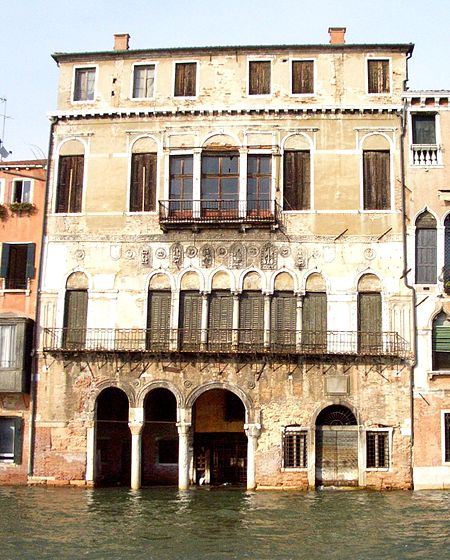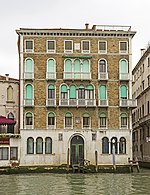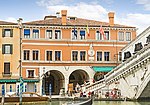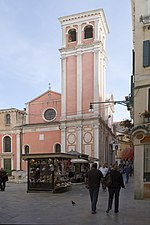Ca' da Mosto
Buildings and structures completed in the 13th centuryMedieval Italian architecturePalaces in Sestiere CannaregioPalaces on the Grand Canal (Venice)

The Ca' da Mosto is a 13th-century, Venetian-Byzantine style palace, the oldest on the Grand Canal, located between the Rio dei Santi Apostoli and the Palazzo Bollani Erizzo, in the sestiere of Cannaregio in Venice, Italy.
Excerpt from the Wikipedia article Ca' da Mosto (License: CC BY-SA 3.0, Authors, Images).Ca' da Mosto
Calle del Lion Blanco, Venice Venezia-Murano-Burano
Geographical coordinates (GPS) Address External links Nearby Places Show on map
Geographical coordinates (GPS)
| Latitude | Longitude |
|---|---|
| N 45.439722222222 ° | E 12.335833333333 ° |
Address
Ca' da Mosto
Calle del Lion Blanco
30170 Venice, Venezia-Murano-Burano
Veneto, Italy
Open on Google Maps











